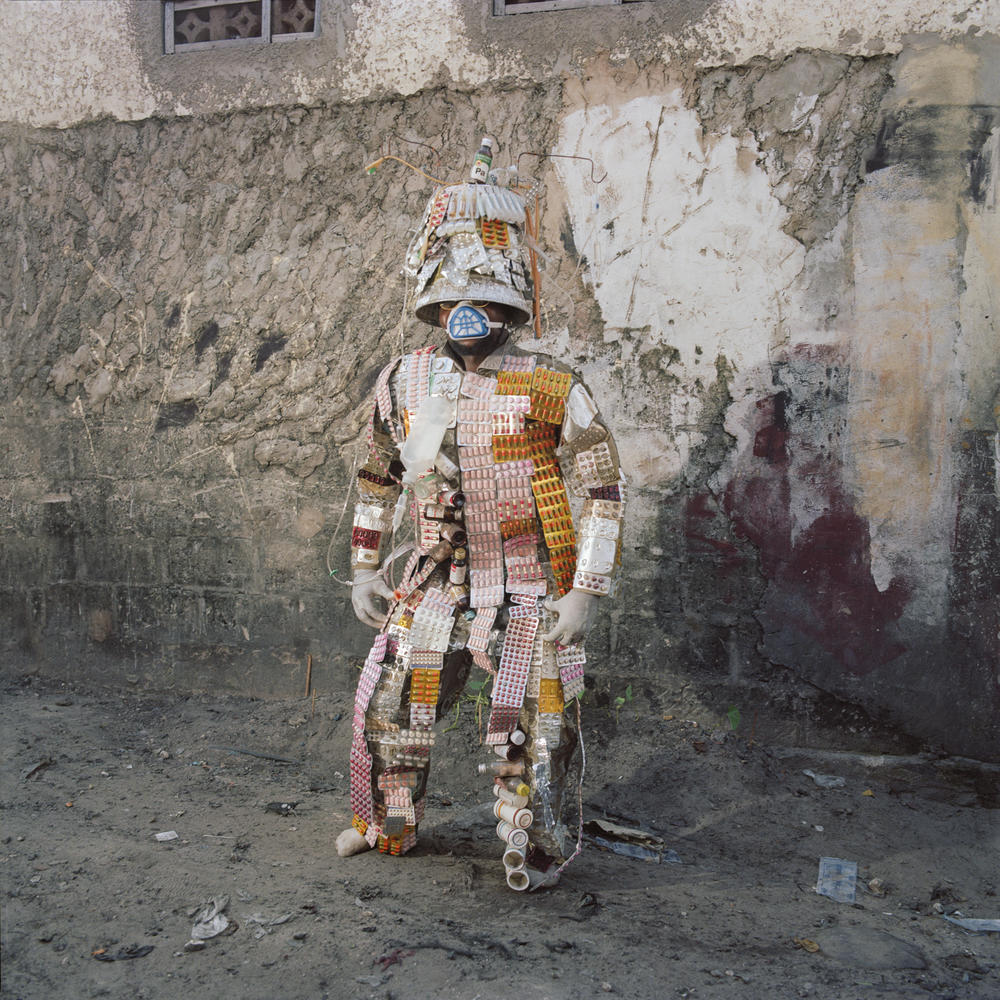Section Branding
Header Content
PHOTOS: Congolese artists channel 'Mad Max' and Chewbacca with costumes made of trash
Primary Content
There's a man wearing a suit of rubbery old car parts, like he's an extra in the film "Mad Max." A woman covered in a jumble of colorful wires from head to toe. And someone posing in a magnificent, Chewbacca-looking getup made out of ... hundreds upon hundreds of unrolled condoms.
These fantastical costumes – fashioned out of trash, found objects and other materials — were created by artists in the Democratic Republic of Congo to highlight the capital city's problems, including pollution, poverty, lack of health care and overconsumption.
But they also highlight the resilience and beauty of its people, captured in a set of striking portraits by Belgian-based photojournalist Colin Delfosse in 2019. He took them after the KinAct Festival, an annual event that brings African and European art to the streets of Kinshasa.
"What inspired me" to take the photos, he says, "was the creativity."
During the festival, the Congolese artists walked and danced around the city in their elaborate costumes. The idea behind this performance, wrote Delfosse on his website, was to "initiate a dialogue [about Kinshasa's social issues] with the city's inhabitants."
Congolese artist Florian Sinanduku, for example, wore an outfit made out of hundreds of packets of pills. The goal was to raise awareness around counterfeit medicines. "Finding medicine is a big issue" in the DRC, he said. "You never know where it comes from and what it is made out of." Indeed, a 2017 report from the World Health Organization found that a majority of the world's fake or substandard drugs come from Africa.
Artist Junior Mungongu donned an ensemble constructed out of plastic bottles and lids to condemn the city's use of single-use plastics. When he walked around the city in his costume, he asked people to screw their used bottles onto the lids. The city struggles with waste management, including plastic waste.
These photos will be on display at a group exhibition for the Meitar Award for Excellence in Photography in Tel Aviv, Israel in November. Delfosse shares any profits from these shows with the artists. "If I sell a photo in an exhibition," he says, "the artists get 50%."
Here's a selection of images, taken in Kinshasa, from Delfosse's series "Fulu Act."
Jonathan Shipley is a freelance writer based in Atlanta. His writing has appeared recently on BBC Travel, Discover Magazine, and Earth Island Journal.
Copyright 2022 NPR. To see more, visit https://www.npr.org.







